
Eric Allan Dolphy Jr. was an American jazz multi-instrumentalist, composer, and bandleader. Primarily an alto saxophonist, bass clarinetist, and flautist, Dolphy was one of several multi-instrumentalists to gain prominence during the same era. His use of the bass clarinet helped to establish the unconventional instrument within jazz. Dolphy extended the vocabulary and boundaries of the alto saxophone, and was among the earliest significant jazz flute soloists.
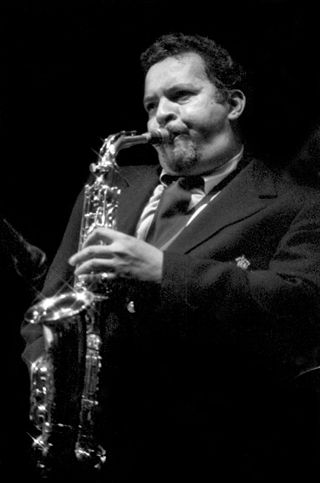
John Lenwood McLean was an American jazz alto saxophonist, composer, bandleader, and educator. He is one of the few musicians to be elected to the DownBeat Hall of Fame in the year of their death.

Cornelius "Sonny" Fortune was an American jazz saxophonist. He played soprano, alto, tenor, and baritone saxophones, clarinet, and flute.
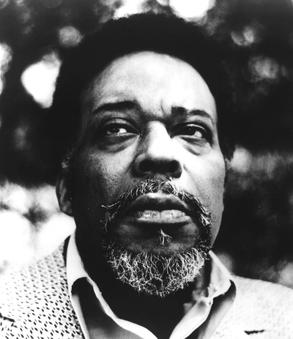
Eugene "Jug" Ammons, also known as "The Boss", was an American jazz tenor saxophonist. The son of boogie-woogie pianist Albert Ammons, Gene Ammons is remembered for his accessible music, steeped in soul and R&B.
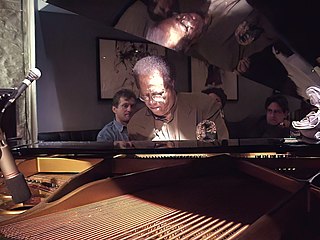
Cedar Anthony Walton Jr. was an American hard bop jazz pianist. He came to prominence as a member of drummer Art Blakey's band, The Jazz Messengers, before establishing a long career as a bandleader and composer. Several of his compositions have become jazz standards, including "Mosaic", "Bolivia", "Holy Land", "Mode for Joe" and "Ugetsu/Fantasy in D".

Elvin Ray Jones was an American jazz drummer of the post-bop era. Most famously a member of John Coltrane's quartet, with whom he recorded from late 1960 to late 1965, Jones appeared on such albums as My Favorite Things, A Love Supreme, Ascension and Live at Birdland. After 1966, Jones led his own trio, and later larger groups under the name The Elvin Jones Jazz Machine. His brothers Hank and Thad were also celebrated jazz musicians with whom he occasionally recorded. Elvin was inducted into the Modern Drummer Hall of Fame in 1995. In his The History of Jazz, jazz historian and critic Ted Gioia calls Jones "one of the most influential drummers in the history of jazz". He was also ranked at Number 23 on Rolling Stone magazine's "100 Greatest Drummers of All Time".

Paul Quinichette was an American jazz tenor saxophonist. He was known as the "Vice President" or "Vice Prez" for his emulation of the breathy style of Lester Young, whose nickname was "The President", or simply "Prez". Young called Quinichette "Lady Q".

William McKinley "Red" Garland Jr. was an American modern jazz pianist. Known for his work as a bandleader and during the 1950s with Miles Davis, Garland helped popularize the block chord style of playing in jazz piano.

John Arthur "Jaki" Byard was an American jazz multi-instrumentalist, composer, and arranger. Mainly a pianist, he also played tenor and alto saxophones, among several other instruments. He was known for his eclectic style, incorporating everything from ragtime and stride to free jazz.
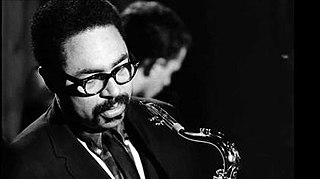
Booker Telleferro Ervin II was an American tenor saxophone player. His tenor playing was characterised by a strong, tough sound and blues/gospel phrasing. He is remembered for his association with bassist Charles Mingus.

Leonard Joseph Tristano was an American jazz pianist, composer, arranger, and teacher of jazz improvisation.
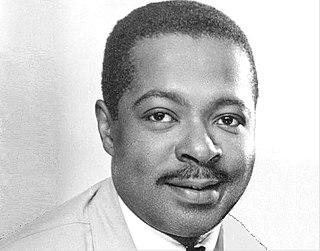
Wynton Charles Kelly was an American jazz pianist and composer. He is known for his lively, blues-based playing and as one of the finest accompanists in jazz. He began playing professionally at the age of 12 and was pianist on a No. 1 R&B hit at the age of 16. His recording debut as a leader occurred three years later, around the time he started to become better known as an accompanist to singer Dinah Washington, and as a member of trumpeter Dizzy Gillespie's band. This progress was interrupted by two years in the United States Army, after which Kelly worked again with Washington and Gillespie, and played with other leaders. Over the next few years, these included instrumentalists Cannonball Adderley, John Coltrane, Hank Mobley, Wes Montgomery, and Sonny Rollins, and vocalists Betty Carter, Billie Holiday, and Abbey Lincoln.

Lester Willis Young, nicknamed "Pres" or "Prez", was an American jazz tenor saxophonist and occasional clarinetist.

Miles Davis and Milt Jackson Quintet/Sextet, also known as Quintet/Sextet is a studio album by the trumpeter Miles Davis and vibraphonist Milt Jackson released by Prestige Records in August 1956. It was recorded on August 5, 1955. Credited to "Miles Davis and Milt Jackson", this was an "all-star" session, and did not feature any of the members of Davis's working group of that time. Alto saxophonist Jackie McLean appears on his own compositions “Dr. Jackle” and “Minor March”.

Eric Dolphy at the Five Spot is a pair of live albums by the jazz musician and composer Eric Dolphy. They were released in December 1961 and November 1963 through Prestige Records. They were recorded on the night of 16 July 1961 at the end of Dolphy's two-week residency, alongside trumpeter Booker Little, at the Five Spot jazz club in New York. It was the only night to be recorded. The engineer was Rudy Van Gelder.

Coltrane is an album by the American jazz musician John Coltrane which was released in October 1957 by Prestige Records. The recordings took place at the studio of Rudy Van Gelder in Hackensack, New Jersey, and document Coltrane's first session as a leader. It has been reissued at times under the title of The First Trane!.

Interplay for 2 Trumpets and 2 Tenors is a jazz album released in November 1957 by Prestige Records. It is credited to Idrees Sulieman, Webster Young, John Coltrane and Bobby Jaspar, with Mal Waldron, Kenny Burrell, Paul Chambers and Art Taylor.

Cattin' with Coltrane and Quinichette is a studio album by jazz musicians John Coltrane and Paul Quinichette released in October 1959 on Prestige Records. It was recorded at the studio of Rudy Van Gelder in Hackensack, New Jersey, and issued two years after the recording sessions took place, and after Coltrane's Prestige contract had ended.

Mal/2 is an album by the American jazz pianist Mal Waldron. It was released through Prestige Records in November 1957. The CD reissue added two additional recordings from the same sessions originally released on The Dealers (1957) as bonus tracks.

Wheelin' & Dealin' is an album by Frank Wess, John Coltrane, Paul Quinichette, Mal Waldron, Doug Watkins and Art Taylor released in April 1958 by Prestige Records. It was later reissued on New Jazz Records in 1964. On a small number of reissues, it is credited to "The Prestige All Stars", a name used by Prestige for various combinations of musicians who were under contract to the label. The compact disc reissue adds two alternate takes that did not appear on the initial vinyl releases.




















